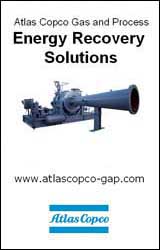Scientific Research Shows That Geothermal Heat Pumps Outperform VRF for Heating & Cooling
Definitive scientific research has shown that a geothermal heat pump system offers far more efficiency in a large commercial building than a variable refrigerant flow system. In January 2013, the Geothermal Exchange Organization (GEO)—with financial assistance from Southern Company—contracted a research team from Oklahoma State University and Oak Ridge National Laboratory to evaluate the relative performance of GHP vs. VRF heating and cooling systems installed at the American Society of Heating Refrigeration and Air-conditioning Engineers (ASHRAE) International Headquarters Building in Atlanta, GA.
When ASHRAE contracted a major renovation of their two-story, 31,000 sq. ft. building in 2008, they established a “living lab” to offer the chance to evaluate commercial building energy and sustainability performance. In addition to improvements to its envelope, floor plan and sustainability features such as lighting, the building uses three separate heating, ventilation and air-conditioning (HVAC) systems:
· A variable refrigerant flow (VRF) system for spaces on the first floor;
· A geothermal heat pump (GHP) system, primarily for spaces on the second floor; and,
· A dedicated outdoor air system (DOAS), which supplies fresh air to both floors.
The GEO research team studied the relative performance of the GHP and VRF systems, determining energy consumption of each, and heating and cooling required by the building.
“There’s no question about it – GHPs trump VRF systems for efficiency and cost savings,” said GEO President and CEO Doug Dougherty. “Our study of heating and cooling performance at the ASHRAE Building proves that over a two-year period—with all variables accounted for—energy use by the geothermal system averaged 44% less than the VRF system.”
The first-floor VRF system includes three dedicated split systems and two multi-zone inverter driven heat-recovery units. The multi-zone heat-recovery units are connected to a total of 22 fan coil units (FCUs). Cooling capacity of the heat-recovery units is 28 tons, while the three dedicated systems have an additional 10 tons of capacity. The second-floor GHP system includes 14 individual water-to-air heat pumps (two ¾-ton units, six 2-ton units and six 3-ton units) connected to a ground loop heat exchanger consisting of twelve 400-ft. deep vertical boreholes, for a total of 31.5 tons of cooling capacity.
To facilitate efficiency studies like that performed by GEO, the ASHRAE Building renovation included an array of 1,600 sensors that monitor heating, ventilation and air-conditioning operations and conditions in each building zone.
Historical and current data from these sensors were available to the GEO research team, led by Dr. Jeff Spitler, Regents Professor of Mechanical Engineering at Oklahoma State University. His colleagues Included Dr. Xiaobing Liu, Staff Scientist at Oak Ridge National Laboratory and Laura Southard, Oklahoma State Mechanical Engineering graduate student. Southern Company provided the services of a power engineer to assist with onsite data measurements.
The researchers concentrated on determining actual heating and cooling provided by the GHP and VRF systems; data analysis; and computation of measured and experimental metrics. They collected two years of operational data (July 1, 2011 – June 30, 2013) for the HVAC systems. Data points included operating mode (off/heat/cool); zone temperature; and discharge air temperature for each individual FCU or heat pump. The researchers gathered data on ground loop water supply, return temperatures and flow rates for the geothermal system.
The team also collected metered energy used by each system. For the GHP system, that included power for all 14 heat pumps, as well as the ground loop water circulation pumps. For the VRF system, power is metered and recorded only for the two heat-recovery units and the 22 FCUs connected to them. Power for the three dedicated split systems is metered through a different panel that also includes power used for computer servers and other equipment. All such differences were taken into account for comparison.
“Though the energy consumed by each system is affected by several factors—including floor space; heating and cooling loads; control strategies; and operating conditions/efficiencies—the efficiency implications of each system are clear,” said Spitler. “Raw data show that the VRF system used twice as much energy as the geothermal system during the two-year study period.”
“The underlying difference between the geothermal system and the air-source VRF system lays in the heat sink and source—ground vs. ambient air,” Spitler explained. “Though the control strategy for the VRF system resulted in longer runtimes compared to the geothermal system, it is clear that ground loop water supply temperatures were more favorable than ambient air temperatures for heat pump operation. This allows the geothermal equipment to operate at higher efficiencies.”
“Final Report, Performance of the HVAC Systems at the ASHRAE Headquarters Building” is available at the GEO website, here. Two peer-reviewed articles by Spitler et al. describing the project and its results were published this year in the ASHRAE Journal (September and December2014 issues). The articles can be accessed online at the ASHRAE website, here, and here. GEO will offer a free webinar about the research in early February 2015.
GEO – The Geothermal Exchange Organization
www.geoexchange.org











